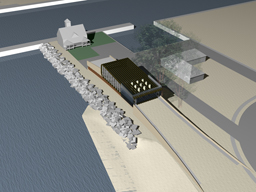
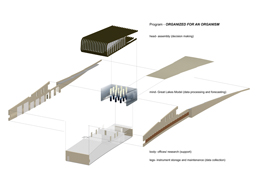
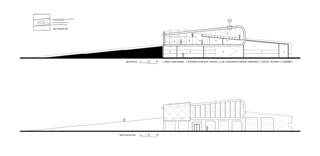
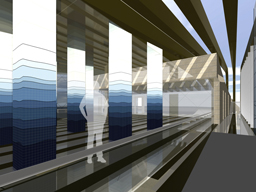
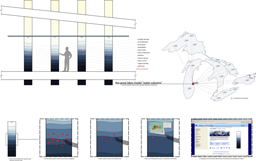
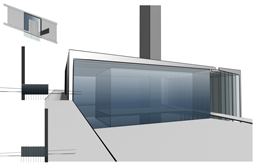
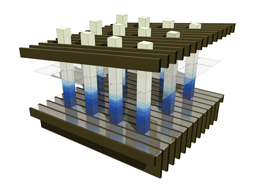
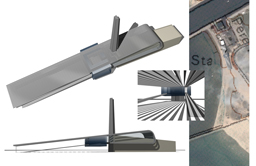
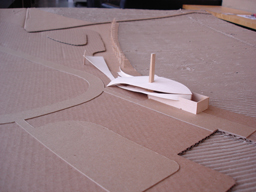
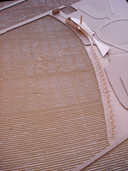
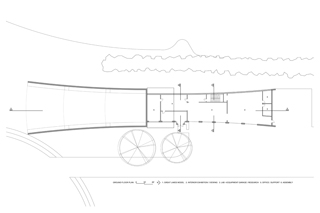
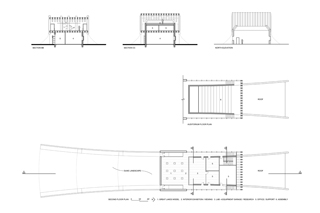
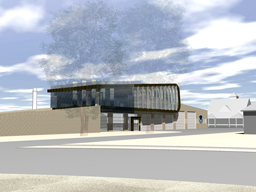
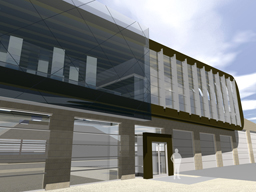


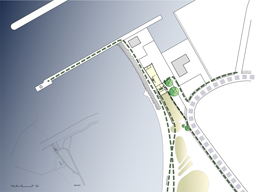
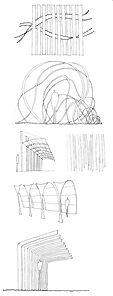

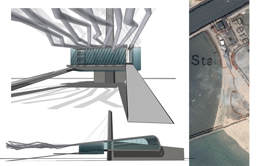
The
Great Lakes Environmental Research Laboratory’s foremost objective is
to “establish an ecological forecasting capability for the Great Lakes.” They
are working toward this goal through rigorous research; a sequence of data
collection, data processing and finally processed output. Although the data
that the researchers collect in the field comes from tangible elements such
as water temperature, current direction, water oxygen levels and invasive
species, the processed information is not always accessible and legible to
the layperson.
The intention of this building is to translate that data through user oriented
devices and thus relate to visitors the changing conditions of the Great
Lakes and in doing this, also portray the role of the researcher.
The Model of the Great Lakes is conceived similar to the data that is collected
with Niskin Bottles which allow researchers to examine water composition
by trapping samples at different depths in the water column. The Model’s
Water Columns provide a description of the connected characteristics of water
and how a change in a particular component affects the whole system.
In addition to this building’s role as a translator, it is also intended
for the people who work there. The building serves to support the daily,
weekly, monthly and yearly events that take place within GLERL and the NOAA
in so far
as to provide spaces for research, instrument storage, maintenance, offices
and assembly.
Steve Jelinek